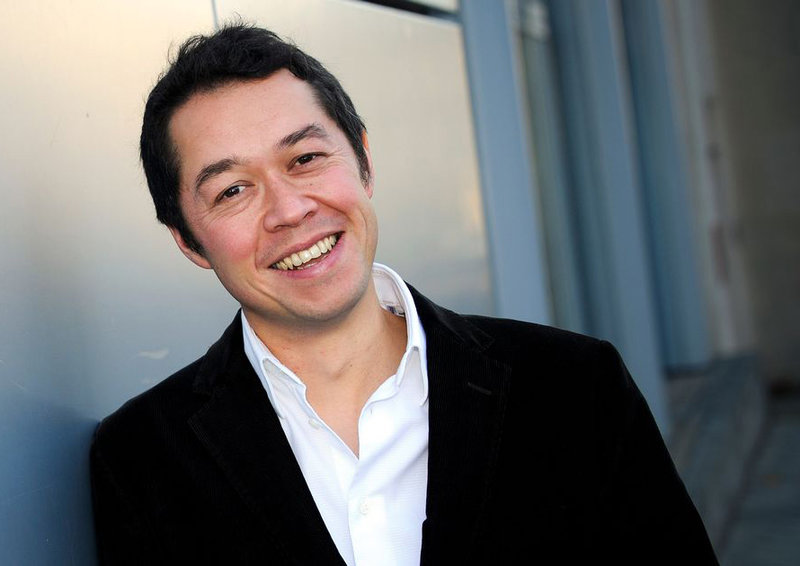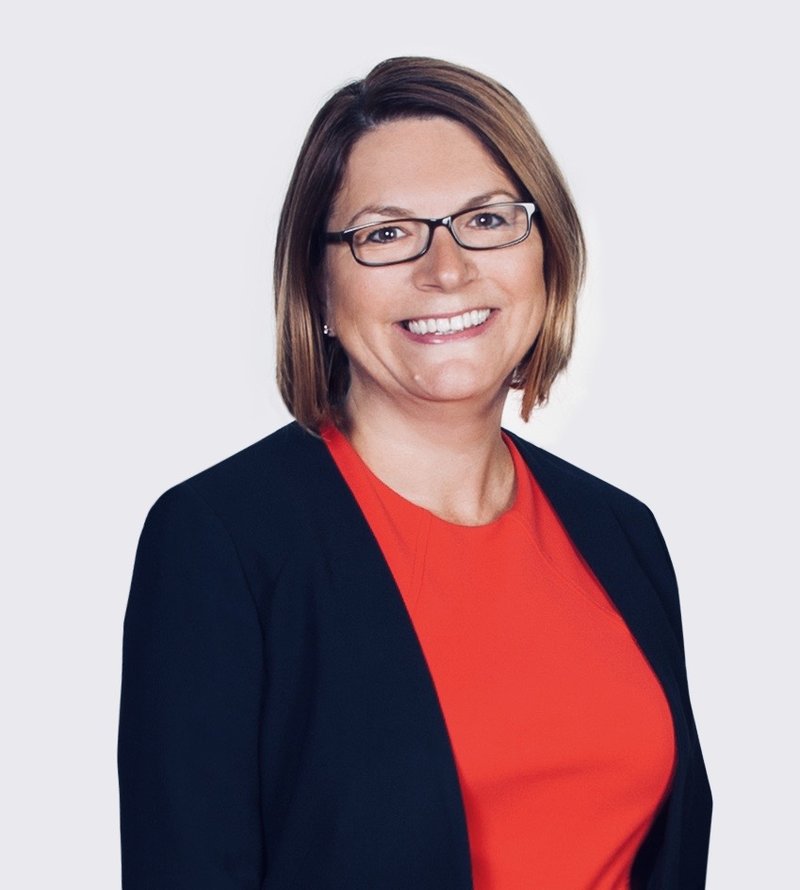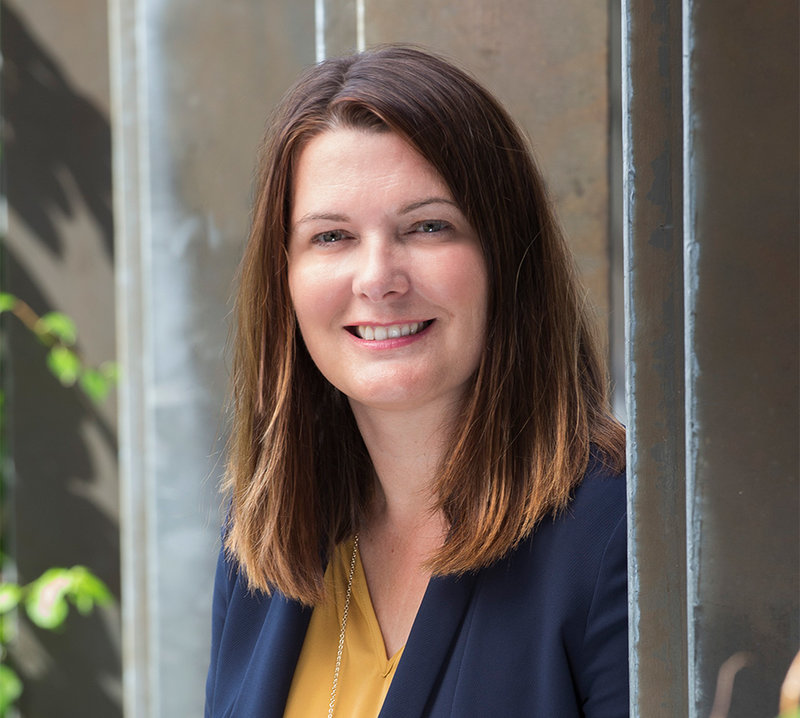Remote working
Back to Work? C-Suite Plans for a Return to the Office
Lockdowns are beginning to lift, but are companies calling their employees back into the office? We hear from key members of the C-Suite about when, if ever, they expect their workforce to return

Ian Schenkel, vice president, EMEA of Flashpoint: “We have seen tremendous results from our last few quarters”

Do you plan to bring your employees back to the office this year? If so, when?
For now, Flashpoint is not planning to bring employees back to the office this year. The team is continually monitoring the situation, however the risk is too great to bring employees back at this time.
In addition, we have seen no decrease in productivity, in fact, we have seen tremendous results from our last few quarters as a business, with our entire team working from home.
Have you increased your support for remote working after the pandemic? If so, how?
Thankfully, Flashpoint’s infrastructure has supported a 100% remote workforce since 2016. Our IT and security operations have also practiced numerous times for disaster scenarios, meaning minimal changes have had to be made for remote working during and following the pandemic.
How much has the coronavirus changed your workforce strategy? And in what ways?
Like many tech companies, we are finding that the traditional ideology of teams needing to be in an office isn’t as relevant when productivity is high and individuals are motivated. Our primary focus is ensuring that all employees are operating with the utmost caution in mind, with tools in place to ensure work is done securely.
Bob Davis, CMO at Plutora: “We are now a remote workforce company”

Do you plan to bring your employees back to the office this year? If so, when?
We have made a decision to maintain a work from home policy on a permanent basis. So not only are we not bringing employees back to the office this year, but we are now a remote workforce company. This works well for us. We will have a small space to access for team meetings, customer or partner visits, or other in-person requirements as these requirements work their way back to our lives in the coming year(s).
Have you increased your support for remote working after the pandemic? If so, how?
Our company had a reasonable population of employees that were working from home prior to the pandemic. Therefore, we had a strong infrastructure in place for remote office communication and collaboration.
Making this available to the entire company was straightforward. Support is provided to employees new to the WFH reality with office supplies, infrastructure support and training. It has proven to be a very smooth transition to the new normal for Plutora!
How much has the coronavirus changed your workforce strategy? And in what ways?
Clearly it is a worldwide health crisis that we take very seriously. So as we implemented the policies and support described above, we did so with extreme care given to employee health and safety. This set us up for a productive and efficient business even as we work from home.
Moving forward, this has increased the options for hiring. Given we are now remote, we now recruit across the globe rather than within a handful of cities. This increases the talent pool and we feel will serve us well in the future.
Connie Stack, chief strategy officer, Digital Guardian:

Do you plan to bring your employees back to the office this year? If so, when?
We are taking a cautious approach and are evaluating back-to-office implications month to month. The decision to return to the office is based on several variables, including the infection rate and trends in the specific regions where offices are located, federal and local regulations and policies for office re-openings, and guidance from leading health organisations.
In addition to employee safety, we also consider employee comfort and productivity – a return to the office would require daily temperature checks, employee masking, no shared lunches or socialisation, frequent personal and workspace sanitisation stations and maintaining social distancing during interactions.
At this time we don’t feel reopening would provide a good employee experience but we are carefully measuring against these variables, as well as others, such as when or if schools open up this autumn. Even if we do open our offices in 2020, it would be at a very limited capacity per day, and most likely voluntarily.
Have you increased your support for remote working after the pandemic? If so, how?
Our company has always been flexible with employees working from home, so we’ve experienced minimal friction in the transition. For example, our IT teams have migrated data centres and coordinated safe ways for employees to collect their monitors and items from their workstation for a more comfortable working experience from home.
In addition, we’ve increased our monthly Town Hall meetings with our CEO, Mo Rosen, to weekly so we can keep employees connected. Mo also conducts 'fireside chats' with smaller groups to ensure employees are being heard. In addition, we do regular employee satisfaction surveys to gage how comfortable and supported our employees feel. Managers have also been encouraged to increase touch-base calls with employees to ensure everyone is engaged and feeling supported during this time.
How much has the coronavirus changed your workforce strategy? And in what ways?
Besides implementing policies and protocols to protect the health of our employees, we haven’t dramatically changed our strategy. We put a travel ban in place for all employees until the Covid-19 surge shows significant decline.
This loses the personal touch our account executives are accustomed to, but we’ve been assisting them by increasing virtual ‘lunch and learns’ or happy hours to keep the sales team engaged with customers and prospects.
Paul Chapman, CIO, Box: “We chose to go public with a return date to give our team peace of mind”

Do you plan to bring your employees back to the office this year? If so, when?
Boxers' health and safety continues to be our top priority. Given the patchwork quilt of government regulations and guidelines and the uncertainty associated with factors such as public transportation, school and childcare closures, we have extended the option for remote work for our employees through the end of January 2021.
We chose to go public with a return date to give our team peace of mind and clarity, however our internal Covid Council (a cross-functional group made up of HR, IT, TechOps, GTM, Legal, Finance, Security, and Crisis Management) continues to monitor the situation very carefully through the lens of a "wait and see" approach.
Have you increased your support for remote working after the pandemic? If so, how?
After the pandemic, we believe there is going to be a significant increase in the number of people who will continue to work remotely, even if certain roles have been traditionally office-based. We see the future of the office as a creative, collaborative hub for when high quality interactions are called for, and also for employees who choose the office over remote work.
As we bridge between the pre-Covid, office-based world and the new, future way of working, we want to provide for our employees the flexibility of choice and we also want to help our customers to do the same.
How much has the coronavirus changed your workforce strategy? And in what ways?
From day one, our ethos and guiding principle as a company is that work is a state of mind not a place. We built our services to not discriminate on location and to provide the ability for our employees to work from anywhere. Transitioning to a fully remote workforce was relatively easy for us, however, our usage of communication exchange tools and services has significantly increased. For example, internally our Box-Zoom integration usage is up more than 550% month-over-month compared to pre-Covid.
In March, we chose to pivot our product strategy to accelerate secure remote work capabilities and provide improvements in user experience, search and performance. This meant refocusing on three key areas, and launching new product features and announcements around each.
The first area is content security. As employees go to work from home on unmanaged personal devices, there are new cybersecurity challenges that become critical. We've introduced a number of security features in the area of automated classifications, mobile device management and malware detection to help customers with secure remote work.
The second is document-centric workflow automation. As businesses move from manual business processes to digital and automated processes many want a simple no-code way of doing so. Box has accelerated a number of enhancements to our Box Relay capabilities to support this need.
Finally, integration with the best of breed applications that are being used for remote work. We want to enable a pervasive and secure way to access content from all of the applications and tools our customers are using to get their work done.
Ali Niknam, CEO of bunq: “There is no urgency to get everybody back to the office”

Do you plan to bring your employees back to the office this year? If so, when?
As a fully digital bank, almost all our work can be done from home so there is no urgency to get everybody back to the office. At the height of lockdown, all our Sofia bunqers worked from home and in Amsterdam it was approximately 90%.
We are slowly welcoming bunqers back to the Amsterdam office for a maximum of three days a week. To responsibly carry this out, we have re-organised the office to be fully compliant with the Dutch 1.5m distancing guidelines, and allow each bunqer to choose which days suit them best in order to avoid overcrowding.
Have you increased your support for remote working after the pandemic? If so, how?
We recognised that the shift in working from home would reduce the face-to-face interaction that keeps our team upbeat and connected. To combat the isolation that can come with working from home, we have launched a number of initiatives at bunq.
We fully focused on virtual social events, with activities such as live work-out streaming, quizzes, and virtual hang out sessions. These activities have kept our social culture ticking over wonderfully, even from home.
We are looking forward to the gradual return to our offices. The number of bunqers at the office has been increasing as lockdown restrictions ease, but the health and safety of our employees and their families comes first, so we’ll continue to support those working from home, whilst allocating the right safety measures for those returning to our HQs.
How much has the coronavirus changed your workforce strategy? And in what ways?
Our strategy has remained consistent throughout. We’ve had our highest hiring quarter to date and we don’t have plans to stop growing.
Since the beginning of lockdown and the height of the pandemic in March of 2020, bunq has received over 6,000 job applications and has made over 60 new hires, with an additional 30 positions still on our site for jobs both in Amsterdam and Sofia. This truly shows the ability we’ve had to grow as a fintech, even in times of crisis.
Ed Molyneux, CEO and co-founder of FreeAgent: “We cannot justify putting anyone’s health in jeopardy”

Do you plan to bring your employees back to the office this year? If so, when?
We’re currently offering a very limited number of FreeAgent employees the opportunity to work in the office, but only for those whose situation at home does not enable them to be as productive as they would like, or need, to be. This includes people with the distraction of young children who are not yet back at school, or those living alone whose mental health has been adversely impacted during the pandemic.
However, we anticipate the majority of our employees will continue to work remotely for at least the rest of 2020. Due to the potential risks still associated with mass gatherings – even within well-ventilated, open-plan environments – we cannot justify putting anyone’s health in jeopardy by fully re-opening our office.
Have you increased your support for remote working after the pandemic? If so, how?
We’re fortunate in that FreeAgent was already well set up to cater for employees who wanted to work from home, so the change to being a fully remote business has thankfully been straightforward and easy to implement. A lot of the technical infrastructure is already in place to enable teams in our Edinburgh HQ to collaborate with fully remote staff across the rest of the UK (e.g via Zoom, Slack, Google Teams etc.), so we’ve just had to scale up what we were already doing.
Of course, there have been obstacles to overcome. Coordinating a formerly in-office IT department so it can support staff who are working from home across the central belt of Scotland has been challenging. You can’t simply walk over to someone’s desk and hand over a new laptop cable or troubleshoot an issue in-person, so there are new logistical procedures that we’ve had to introduce for these kinds of issues.
It’s also been challenging to maintain high morale during this difficult time, and our People Operations team have worked tirelessly to make sure that all of our employees feel properly supported and looked after - including running regular mental health support surveys, leading online mindfulness sessions, hosting remote coffee breaks and running extra-curricular social activities. Although it takes a lot of time and effort, we believe it’s vital to keep all of our employees as happy and healthy as possible.
How much has the coronavirus changed your workforce strategy? And in what ways?
Thankfully, we’ve not been severely impacted by the coronavirus pandemic – especially not compared to other UK businesses that have been forced to furlough staff, scale back their operations or completely overhaul the way they work to accommodate remote employees.
Because we’re a predominantly digital business, we’re actually working in a very similar way to how we did before the pandemic. We have the same amount of team collaboration and planning as before and the principles guiding the different departments within FreeAgent haven’t changed. It’s just that we’re doing a lot more through video calls and instant messaging rather than traditional ‘in-person’ interaction.
Yaniv Vardi, CEO of Claroty: “We encourage our employees to work flexible hours”

Do you plan to bring your employees back to the office this year? If so, when?
Our reopening plans are in accordance with the government and health authority's guidance, implementing best practices for social distancing and other risk mitigation measures.
Our NYC headquarters are closed until further notice. We have opened our office in Israel, where just over half of our 180+ employees are based, however those employees still have the option to work from home until social distancing measures are no longer needed. Under the most recent guidelines, our facilities in Israel can accommodate up to 30 employees simultaneously.
Department managers decide if and who of their employees are necessary at the office, while prioritising the employees’ needs. The management team syncs every week to monitor the situation.
Have you increased your support for remote working after the pandemic? If so, how?
We encourage our employees to work flexible hours so that they can also take care of their kids or pets, go to doctor's appointments, or even just run errands when the crowds are smaller and there is less risk of exposure. Additionally, even though many still cannot travel, we encourage taking PTO and mental health days to recharge. We also offer home office equipment packages so that every employee can have the same setup as they would in the office.
How much has the coronavirus changed your workforce strategy? And in what ways?
The safety and health of all of our employees is our first priority. Work continuance should be safe, easy and practical for all employees.
Fortunately, all Claroty employees can do their jobs remotely, so we have been able to continue business operations at more or less full capacity. Even with all the changes in operating a high-growth startup during a global pandemic, Claroty has achieved some amazing results.
We just had two consecutive record-breaking quarters, including both year-over-year revenue and logo growth, and expanded customer acquisition even further globally and across several new verticals. Additionally, we have not made any layoffs or salary cuts and are still actively hiring and recently increased our hiring rate to support our significant growth.
While we would be short-sighted to think that we won’t have more challenges as we continue to face unknowns from this pandemic, protecting critical infrastructure and manufacturing segments such as automotive, pharmaceuticals and f&b is especially important in a time of crisis, as these businesses are trying to improve their productivity by connecting more IoT devices and remotely access their solutions which create bigger exposure, so we remain as committed as ever to this mission.
Rebecca Grattan, chief people and culture officer at Avast: “The way we and our customers work is unlikely to ever be the same again”

Do you plan to bring your employees back to the office this year? If so, when?
Our offices worldwide will remain closed until the end of the year. We will continue to monitor the situation and to prioritise the individual circumstances, concerns and feedback of our workforce before making any future decisions.
The situation is obviously fluid and we recognise that our employees, understandably, have strong feelings and many questions around this issue, which we will always respect and take into account.
Have you increased your support for remote working after the pandemic? If so, how?
Avast has always provided flexible working arrangements for our colleagues and therefore our working practices have been largely unaffected by the pandemic. We continue to support all our colleagues with any IT and home office equipment and remote working requirements they have, and we offer training and resources to help our employees adjust to the challenges of remote working.
We will support and protect the physical health of any team member, especially those at risk and those who may have been exposed to Covid-19. Equally, we are supporting the mental health and wellbeing of our colleagues who may find working from home isolating and/or stressful. And those for whom the ambiguity and uncertainty of the current situation and future outlook might cause anxiety or distress.
How much has the coronavirus changed your workforce strategy? And in what ways?
We recognise the way we and our customers work is unlikely to ever be the same again and we are therefore reviewing our workforce strategy and what that may mean for the future work.
We have launched a major ‘Future of Work’ initiative in which every single Avast colleague has the opportunity, and is encouraged, to contribute to the discussion and present their personal views and ideas. What this new strategy will be is yet to be determined, but it will be firmly rooted in the feedback and recommendations our colleagues give us.
Sridhar Iyengar, managing director of Zoho Europe, parent company of ManageEngine: “Some of our employees are already keen to return”

Do you plan to bring your employees back to the office this year? If so, when?
As it stands, every country and region are experiencing different rates of infection and in turn, are in different stages of lockdown. With this in mind, our approach to bringing employees back in to the office is very dependent on the situation in the region that the employee is based, as ensuring our teams are safe and healthy is undoubtably the top priority for us.
We are closely monitoring the situation as it evolves and will be using that to frame any future plans for reopening our physical offices worldwide. Even when we do think it is safe to do so, we may only introduce select individuals and teams back in to the office as all of our work can be done remotely thanks to the tools we have in place.
We also appreciate that some of our employees are already keen to return, as the office environment allows for social interaction that can have a positive impact on their mental wellbeing. However, before we consider this, we will be ensuring that there are sufficient health and safety precautions in place, including social-distancing measures and regular health checks.
Have you increased your support for remote working after the pandemic? If so, how?
Here at ManageEngine, we have all of the tools and support systems for working remotely. These tools include day-to-day collaboration and online communication software, as well as online office tools and video and audio conferencing.
With our positive company culture playing such a key role in our business, we have also ensured we are still running virtual open houses for both individual teams and as an entire company, to maintain morale and help employees keep the bonds they have built with coworkers, which is particularly important in these difficult times.
In addition to these measures, we have also built up forums to address any technical challenges that our employees might have come across in the remote working set up and opened direct lines to HR for any personal assistance or support that may be required.
How much has the coronavirus changed your workforce strategy? And in what ways?
As a company that operates largely in the cloud, we are fortunate that the work we do can be done from anywhere – whether that’s at home or in the office. While up until now we have predominantly operated from a central office location, the pandemic has highlighted that our employees can still deliver high quality results and great customer service from remote locations, which is why we are looking at revisiting our workforce strategy.
In both India and the US, we are experimenting by setting up smaller working hubs in the various locations where our employees are based. This means we can distribute our workforce and decongest large cities, while also providing employees with a space to work collaboratively.
In the long term, this may provide a springboard for rural prosperity, as while typically you wouldn’t find corporate offices located in rural areas previously, we can now see it is a viable option as long as there is good internet connectivity. If our initial experiments work out well, there's no reason we could not replicate this model anywhere else in the world.
Rob Chapman, co-CEO of Firebrand Training: “We are definitely bringing people back this year”

Do you plan to bring your employees back to the office this year? If so, when?
We are definitely bringing people back this year and have measures in place so that it is safe for them to re-enter the office now if they’re comfortable doing so. The pandemic has triggered the world of work to change forever because people have proven they can work from home effectively, but I never want Firebrand to be a completely remote organisation – in my eyes this would be culturally destructive.
An ideal model would be that people work from the office at least two days a week so that the “umbilical cord” to the business, team and culture is still strong. Companies who want to implement 100% remote working may save a fortune on office costs, but I predict in a few months will find themselves experiencing a complete lack of loyalty or culture. Being in-person matters, we’re human after all.
Have you increased your support for remote working after the pandemic? If so, how?
We train people in digital skills, particularly IT and cybersecurity skills, so our job is to be on top of the latest workplace technology trends and have experience of implementing them into our organisation. This means that all of our systems were already on the cloud and we’re used to supporting remote workers as we have staff as far away as Russia and Thailand.
The main challenge we have had to overcome is retaining culture and communications completely remotely, as we are normally a very social, bustling office. So, aside from logistical things like ensuring our staff have the most up-to-date tech at home to ensure they can keep working as normal, our big focus throughout lockdown has been on comms.
We moved our monthly KIT (Keeping In Touch) meeting to be weekly to share everything that is going on and also check in on what we could be doing better. Also, as a senior team we’re a chatty bunch and have been trying to replicate “water cooler meetings” by calling up staff and randomly checking in on them.
From a culture perspective, we hold frequent quizzes and Friday night drinks to keep up the social element of working at the company – we’ve also decided to trial early leaving Fridays in August to give people some much needed outdoors time after they’ve been locked at home for months.
How much has the coronavirus changed your workforce strategy? And in what ways?
Prior to the Covid-19 pandemic, the digital skills gap was already a growing crisis. With many peoples’ training or education heavily disrupted during this period, it is imperative to ensure these skills continue to be gained so that in the years following coronavirus there is a well-trained pool of apprentices and graduates to hire from.
At Firebrand, we wanted to continue offering critical cybersecurity and IT skills to the UK workforce, so launched our Online Instructor-Led (OIL) Training, a programme that replicates our unique, intensive, in-person training completely virtually for over a thousand learners unable to leave their homes.
Through OIL, we have been able to continue our commitment to our learners, employers and all stakeholders by continuing to teach necessary skills that should not be put on hold. Since July we are also excited to be offering socially distanced in-person training back at our centres as well!
In terms of the workplace, our strategy will change but not too much because we have a great culture and I don’t want to change that, so people will still be encouraged to work from our office twice a week. I have two kids who are young adults and the thought that they’d never experience office life is really sad – one of the best things about the early stages of a career is the social side and being part of a fun, exciting culture. We have always taken on grads and I want to keep the great things about the office alive for them. I think this is really important for the business as well as the next generation of workers.
Susan Tohyama, chief human resources officer, Ceridian: “We anticipate continuing in a virtual-first model until the end of the year”

Do you plan to bring your employees back to the office this year? If so, when?
We are focused on the health and safety of our employees, customers, partners and suppliers. The goal for beginning the return to the workplace will be informed by guidance set by national and local public health authorities.
Generally, we anticipate continuing in a virtual-first model until the end of the year and will continue to look at this on a region-by-region basis.
But we are also looking at individual circumstances and how we can best support our employees. That means taking into account school and childcare openings/closings, employees who rely heavily on public transportation, and elder care obligations.
As a result, we will continue to update our return to workplace policies as the situation evolves throughout the UK and around the world.
Have you increased your support for remote working after the pandemic? If so, how?
Yes, we have, and done so holistically, supporting their mental and emotional and physical wellbeing.
For instance, we increased flexibility of where our employees around the world can work by providing the tools and technology needed to make remote work possible. We also invested in training, wellness support programs, and information to help employees navigate challenges unique to the pandemic – and for a spectrum of people: new employees, managers, parents, caretakers, people who were newly virtual, and so forth.
Recognising that employees’ children are in this too, we created the Ceridian Kids Club that includes kid-friendly content and programming. All of this was reinforced by the support in place for some time around flexible work arrangements.
How much has the coronavirus changed your workforce strategy? And in what ways?
Pre-Covid we tended to approach scheduling and our view to work around relatively traditional ways of thinking. Since then, there has been a rapid transformation in our workforce strategy. Being thought leaders in human capital management means Ceridian needs to research and ideate on all aspects of an evolved workforce.
Ultimately, Covid-19 has taught us lessons we cannot un-learn and we see an opportunity to reimagine how we work.
Stephen Whatling, chairman of Business Critical Solutions: “One thing that is likely to change is our recruitment strategy”

Do you plan to bring your employees back to the office this year? If so, when?
The nature of our business means that we have traditionally embraced remote working as our teams are often onsite both in the UK and across the world overseeing and managing construction projects. Our consultancy work can obviously be done remotely too.
We do have a head office in central London where people have traditionally come to but we have decided to ‘repurpose’ the space to create more of a collaboration and meeting hub. With appropriate social distancing and hygiene we will encourage our teams to use it when they feel that face to face interaction is important.
Have you increased your support for remote working after the pandemic? If so, how?
We haven’t really changed our working practices as we have always been set up to support remote working. However, we have recognised the potential impact on our people of having less physical social interaction and our management team has upped their virtual interaction. We have also increased our pastoral care through the introduction of more social events such as ‘virtual beers’ on a Friday evening.
How much has the coronavirus changed your workforce strategy? And in what ways?
Most of our projects have continued through lockdown although we did limit all but essential travel in line with government guidelines. For example, we continued to manage a major datacentre construction project in Italy’s red zone and provide consultancy for a client in South Korea – all from home.
One thing that is likely to change is our recruitment strategy which has previously geographically targeted people who are able to travel into our London office. This is now obviously much less important.
Andi Janes, chief people officer of Content Guru: “Obviously everyone has seen the benefits of the simple commute”

Do you plan to bring your employees back to the office this year? If so, when?
We provide critical national communication services, parts of which are delivered onsite at our Bracknell headquarters. Being sure of consistency and reliability for customers meant altering our onsite activities to be Covid-secure from day one of the lockdown period, albeit with only a handful of the team onsite each day, rather than the hundreds who would usually be there.
The key to our success over recent months has been to gradually increase footfall. Introducing a few colleagues at a time allowed us to make sure the measures we expected to provide a Covid-secure environment were both practical and safe. Now, our team accesses the office on a rotating schedule, meaning everyone has the opportunity to use the workspace, but that social distancing can be easily maintained.
Have you increased your support for remote working after the pandemic? If so, how?
In some respects, yes. Obviously everyone has seen the benefits of the simple commute from the bedroom to the dining room, or wherever their workspace is. Everyone in our team has also seen the benefits of fewer distractions and often higher productivity when working remotely. It would be hard for any organisation to overlook those benefits.
Content Guru is, at its core, a collaborative environment, geared towards sharing knowledge and working closely together to create great product innovations. We wouldn’t shy away from admitting that most of this was achieved face-to-face before the pandemic. Obviously, the ability to have these face-to-face working arrangements has changed dramatically, and we’ve all had to find ways of building that opportunity to collaborate into a remote setup.
What hasn’t changed is that communication is fundamental to everything we do. Communication is a core cultural value for our business and we make technology which allows organisations to break free of onsite hardware and be based remotely if needed.
Our own cloud technology products enable colleagues to, for example, set their status as available or on a break, make calls or join conferences. Colleagues use a variety of channels including video, instant messaging and emails to connect with one another as fluidly as possible.
Experiencing lockdown underlines our belief that organisations should make the most of any resources already at their disposal, supplementing from outside where necessary, to open as many channels of communication as possible between colleagues.
A scheduled video conference with thirty people on it is great in some circumstances (and we have all enjoyed examining our colleagues’ decorative choices), but it isn’t the answer to every situation. The bigger thing for us has been replicating dropping into someone’s office, or having a quick confab with two or three teammates around a ping-pong table, not laying on the big set-piece events.
How much has the coronavirus changed your workforce strategy? And in what ways?
Our People Plan, or workforce strategy, hasn’t really changed in content or aim, just in method of delivery. Having a more remote workforce has meant upping the frequency of internal communication, and proactively emphasising key messages/behaviours that would normally just happen organically at the office.
We’ve been promoting the need for human and personal interaction between colleagues. Regular communication across the business from the CEO, the People team, and from line managers encourages colleagues to connect with one another often and through all means available to them. When remote, the rich set of tools available can largely provide the communication experience we rely on in-person (video, instant message – including group-chats, phone, email).
None of this, in our opinion, means the office is a flawed concept. At the moment, we’re all managing long-distance relationships, which is super hard work, not as natural as in person, and overtime you can drift apart without realising it. So, we’re looking at how the Covid-secure office is repurposed to connect and keep a more remote workforce together and aligned.
For us, the office becomes a hub for collaboration, for reconnecting with one another and for celebrating the culture that makes us unique and successful. The Covid-secure office allows our team to recharge and refocus efforts, ensuring they’re on the same page and can make the best possible use of remote work, which is here to stay for the foreseeable future.
Susan Bowen, CEO of Aptum: “We consider ourselves open for business”

Do you plan to bring your employees back to the office this year? If so, when?
We are very mindful of the numerous concerns and priorities we must balance within our reopening framework and are committed to the health and safety of our employees, customers and the entire community. Aptum operates globally, so we are ensuring our reopening processes are in accordance with safety guidelines outlined by local governments, as well as the relevant national health organisations.
We consider ourselves open for business. Our offices have been open in the USA and UK following the guidelines of “Covid-Secure” and our employees have been given the personal choice to assess their own risks to returning. In some cases (given size of office and population) we have returned as two cohorts. We have also opened either 3 or 4-day working weeks to maintain a commitment to our flexible working policies.
Our datacenter operations have remained open and running as critical infrastructure facilities, our customers are being serviced by our teams 24 by 7. In some regions they have reopened under Covid-Secure Guidelines for our customers to also have access to the facilities.
Have you increased your support for remote working after the pandemic? If so, how?
Remote working isn’t a completely new concept to our team at Aptum. As a global company, we have always had a flexible working policy with the technical capabilities in the majority of our roles to virtually connect and collaborate with colleagues and customers around the world when in-person meetings were not feasible.
To that extent the frameworks of remote work have always been and remain in place. As we continue to navigate this pandemic, we are committed to being flexible in accommodating our employees and we are continuously communicating with them and our customers to provide regular updates about the business and how we’re responding to the current situation.
How much has the coronavirus changed your workforce strategy? And in what ways?
When the global pandemic began, our leadership decided that we would work hard not to lay off any employees due to Covid-19 and we would stay true to our workforce plan. We established a sustainability program where we offered voluntary furlough to those employees who needed a break or time to adjust to their changing lives.
Also, we offered a voluntary 4-day workweek and a 9-day fortnight option, recognising that at-home parents may need to adjust their schedules to support their families. Employees were also encouraged to use the maximum of their holiday allowances where possible.
By giving employees options, we are creating a community that is working toward the common goal of coming out on the other side of this challenging period stronger than ever.
Back to top